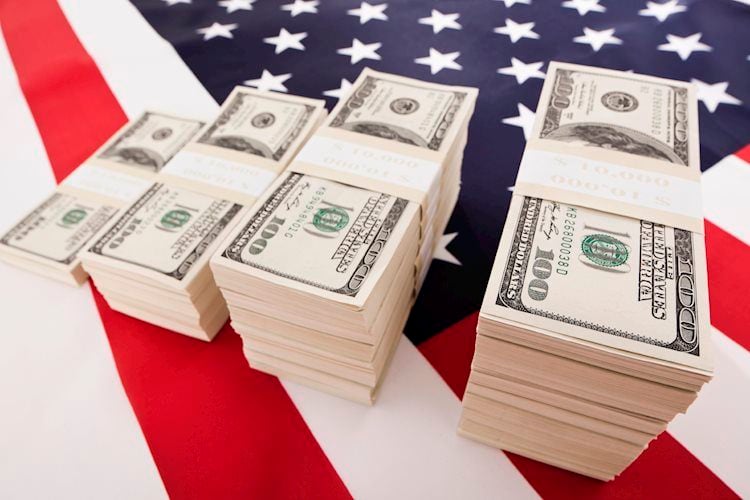- USD sellers take a breather after four sessions of losses.
- Markets digest weekly Jobless Claims and August PMIs.
- Rate cut expectations remain high ahead of Powell’s words on Friday.
The US Dollar (USD), measured by the US Dollar Index (DXY), indicated an incline above the 101.00 level during Thursday’s trading session. This occurs in a market environment, closely attending Chair Jerome Powell’s Friday speech, while markets assess the release of recent Jobless Claims and S&P PMIs.
While market sentiment regarding future monetary policy decisions remains quite consistent, the economic outlook of the US suggests continued growth above trend. This unveils that the market possibly is overestimating the pricing for an aggressive easing once again.
Daily digest market movers: US Dollars gains traction, investors eye Jackson Hole Symposium for direction
- Markets await fresh directions on Jerome Powell’s words at the Jackson Hole Symposium on Friday to get a confirmation on whether the Federal Reserve (Fed) will cut in September.
- The Minutes from July’s FOMC meeting were perceived as dovish, with several officials observing that recent progress on inflation and higher unemployment provides a feasible case for an interest rate range reduction of 25 basis points.
- The market still prices in 100 bps of total easing by year-end, but those odds will likely change after Powell’s directions.
- On the data front, the number of US citizens applying for unemployment insurance benefits rose by 232K in the week ending August 17, according to Thursday’s US Department of Labor (DoL) report.
- This figure was slightly above the initial consensus of 230K and exceeded the previous weekly gain of 228K.
- The August flash estimate for the US S&P Global Composite PMI slightly slipped to 54.1 from 54.3 in July.
- However, this outperformed market expectations of 53.5, indicating that the business activity in the US’s private sector continues to expand robustly.
- Concurrently, the S&P Global Manufacturing PMI plummeted to 48, illustrating ongoing contraction, while the Services PMI saw a minor rise to 55.2.
DXY technical outlook: Bearish momentum cools as the market recovers
DXY’s technical outlook sees a shift as the bearish momentum slows down, providing the market with a respite. Indicators took a hit this week with the Relative Strength Index (RSI) landing in oversold territory, though it’s recovering. The Moving Average Convergence Divergence (MACD) currently prints flat red bars, hinting at a flattening bearish momentum. Hence, the overall technical signals suggest that bears are recuperating after propelling the index to its lowest level in a year.
Support Levels: 101.50, 101.30, 101.20
Resistance Levels: 102.00, 102.50, 103.00
US Dollar FAQs
The US Dollar (USD) is the official currency of the United States of America, and the ‘de facto’ currency of a significant number of other countries where it is found in circulation alongside local notes. It is the most heavily traded currency in the world, accounting for over 88% of all global foreign exchange turnover, or an average of $6.6 trillion in transactions per day, according to data from 2022. Following the second world war, the USD took over from the British Pound as the world’s reserve currency. For most of its history, the US Dollar was backed by Gold, until the Bretton Woods Agreement in 1971 when the Gold Standard went away.
The most important single factor impacting on the value of the US Dollar is monetary policy, which is shaped by the Federal Reserve (Fed). The Fed has two mandates: to achieve price stability (control inflation) and foster full employment. Its primary tool to achieve these two goals is by adjusting interest rates. When prices are rising too quickly and inflation is above the Fed’s 2% target, the Fed will raise rates, which helps the USD value. When inflation falls below 2% or the Unemployment Rate is too high, the Fed may lower interest rates, which weighs on the Greenback.
In extreme situations, the Federal Reserve can also print more Dollars and enact quantitative easing (QE). QE is the process by which the Fed substantially increases the flow of credit in a stuck financial system. It is a non-standard policy measure used when credit has dried up because banks will not lend to each other (out of the fear of counterparty default). It is a last resort when simply lowering interest rates is unlikely to achieve the necessary result. It was the Fed’s weapon of choice to combat the credit crunch that occurred during the Great Financial Crisis in 2008. It involves the Fed printing more Dollars and using them to buy US government bonds predominantly from financial institutions. QE usually leads to a weaker US Dollar.
Quantitative tightening (QT) is the reverse process whereby the Federal Reserve stops buying bonds from financial institutions and does not reinvest the principal from the bonds it holds maturing in new purchases. It is usually positive for the US Dollar.
